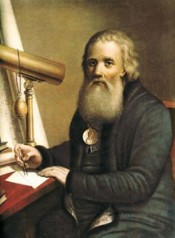
Ivan Kulibin, a self-taught Russian mechanic, was born
On April 10 (21), 1735, Ivan Petrovich Kulibin, a Russian inventor and self-taught mechanic, was born into the family of a small merchant in Nizhny Novgorod.
Having received a strict Old Believer upbringing, Kulibin learned to read and write at a young age and began to assist his father in the shop. He studied locksmithing and watchmaking, and from the second half of the 1750s he began to design complex clockwork mechanisms and other mechanical curiosities. After his father's death in 1758, he opened his own watch workshop in Nizhny Novgorod.
Ivan Kulibin is famous for his pocket watch, which was made in 1764-1767 and is now in the collection of the State Hermitage Museum. The watch is the size of a goose egg and plays several melodies. In addition to the dial, it has flaps that open every hour to reveal metal figures that play out Easter scenes.
In 1769, Empress Catherine II gave I. P. Kulibin this watch as a gift and appointed him head of the mechanical workshop at the St. Petersburg Academy of Sciences.
In 1772, Ivan Petrovich Kulibin designed a 298-meter wooden bridge with a single arch across the Neva River. This design, which was considered brilliant at a meeting of the Academy of Sciences, earned the inventor a personal gold medal on a St. Andrew's ribbon from the Empress. However, for various reasons, the project was never realized.
In 1773–1775, Ivan Petrovich Kulibin, together with optician Ivan Ivanovich Belyaev, designed the first achromatic microscope based on the Euler–Fuss project. In 1779, they demonstrated another technical marvel that became the precursor to the searchlight: a "mirror lantern" with a parabolic reflector made of small mirrors, which produced a great light effect using a weak light source (candles).
In 1791, Kulibin created a "self-propelled" cart (bicycle) driven by a pedal mechanism. He then developed designs for prosthetics, known as "mechanical legs". In 1793, he built an elevator using a screw mechanism that was installed in the Winter Palace.
For a long time, Kulibin worked on creating mechanical vessels capable of operating on rivers and going against the current.
At the end of his life, the inventor, Ivan Petrovich Kulibin, worked on the problem of creating a perpetual motion machine. He spent all his savings on this project, leaving his widow, Maria Ivanovna Dokukina, with no money to bury him with dignity. In order to pay for the funeral, she had to pawn the last remaining wall clock in the house.
Ivan Petrovich died on July 30 (August 11) in 1818, in Nizhny Novgorod, and was buried at the Peter and Paul Cemetery. Most of his technical solutions, far ahead of his time, were not implemented. Today, the name "Kulibin" has become synonymous with self-taught craftsmen who have achieved success in their fields.
Lit.: Кочин Н. И. Иван Петрович Кулибин. 1735–1818. М., 1957; Пипуныров В.Н., Раскин Н. М. И. П. Кулибин. Л., 1986; Свиньин П. Жизнь русского механика Кулибина и его изобретения. СПб., 1819; Шикман А. П. Деятели отечественной истории. Биографический словарь-справочник. М., 1997.
Based on the Presidential Library's materials:
Kulibin Ivan Petrovich (1735-1818) // Persons of Russia: [digital collection]

